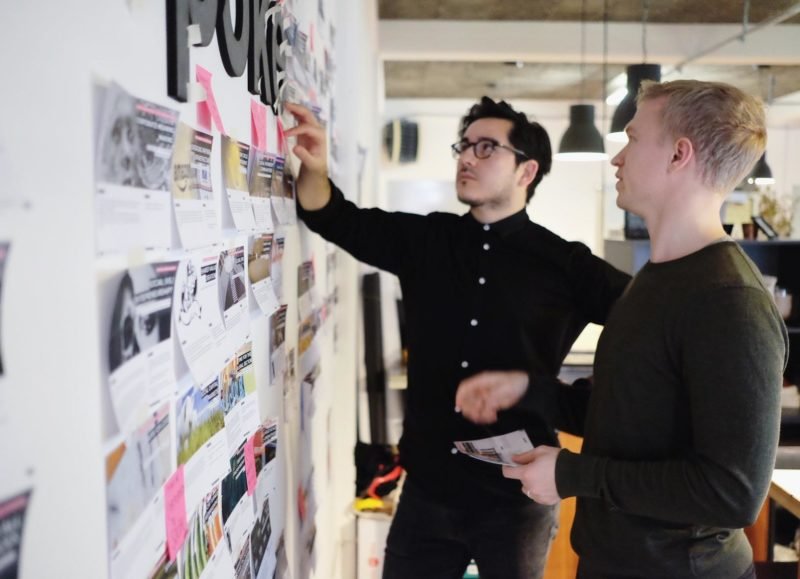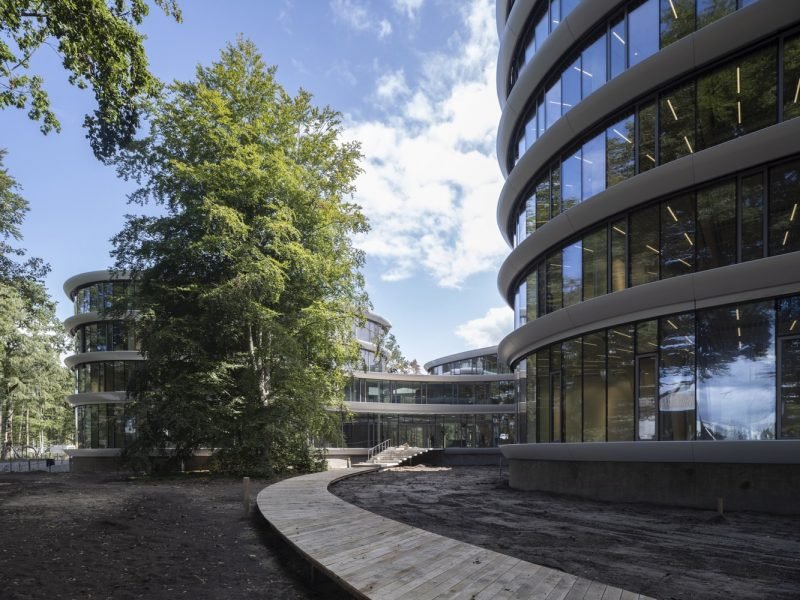Why Not Print Buildings?
During our explorations in fresh developments in architecture we already found plenty of nifty projects, ideas and concepts that have the potential to totally reframe the production of the physical environment. Think of the facade printer, an invention that enables graphic designers to become architects. Or the rise of sustainable plastic as a structural building material. Via Blueprint Magazine we found out about the birth of a machine that is able to print entire buildings. The monster is located near Pisa, Italy, and its father is Enrico Dini, an engineer with a background in offline programming systems for six-axis robots.
“Driven by CAD software installed on a dust-covered computer terminal, the armature moves just millimetres above a pile of sand, expressing a magnesium-based solution from hundreds of nozzles on its lower side. It makes four passes. The layer dries and Enrico Dini recalibrates the armature frame. The system deposits the sand and then inorganic binding ink. The exercise is repeated. The millennia-long process of laying down sedimentary rock is accelerated into a day. A building emerges. This machine could be used to construct anything.”

The machine is explained to be a remix of existing technologies supercharged with robotics. However, it took seven difficult years for Dini to turn his ideas into a tangible model. His persistence even cost him his marriage. In the end he managed to deliver a machine of which its developement embodies a vital move forward in the world of 3D printing, from the “shoebox-size” prints of today “to tomorrow’s ability to print complete structures on site”. The British Architectural Association is the first to get a marketable version of Dini’s baby.
“A 5mm-wide stream spreads out over the dust, becoming a 10mm layer when solid. Because the two components mix outside the nozzle, the machine does not clog up and can maintain an accuracy of around 25 dots per inch. The resulting material is solid stone.”
London-based architect Andrea Morgante has joined Dini to produce the first 3D-printed building ever, a pavilion to be built in the nearby town of Pontedera. Morgante and Dini have decided to print the egg-shaped landmark in parts before assembling it on site. The building shows the potential of the 3D printing machine — its ability to easily create Gaudiesque, curvy structures. Good news for Zaha Hadid and Santiago Calatrava. Furthermore, the printer is four times faster than conventional building and “costs a third to a half as much as using Portland cement”. And last but not least, it creates little waste and is therefore much better for the environment. You can imagine the huge impact 3D printing could have on the building business, since much less efforts will be needed to build a house. Besides that, on site printing of buildings will likely decrease transport of materials and should have a tremendously positive effect on the size of the carbon footprint of a building process.

Interestingly, Dini started working with the European Space Agency Aurora programme, which was established to explore opportunities for a plan for robotic and human exploration of the solar system, “with the Moon and Mars as the most likely targets, and to establish a more permanent presence on the Moon”. He approached a Alta Space, a company specialized in propulsion technologies, and also asked Norman Foster to join the team. Expect some ambitious proposals and ideas in the future…
“The idea is to create a robot that could take the regolithic powder found on the moon and make buildings from it, using advanced sensor technology being developed by La Scuola Normale Superiore and propulsion devices created by Alta Space. In addition it would presumably create large structures in the manner of Foster and Partners. Given the way the practice’s buildings often go against the urban grain, the moon seems ideal.”
—Extra: I found a video about the space printer on Monogocoro:



